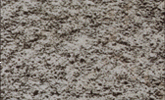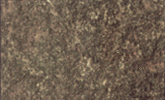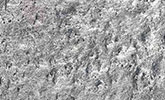Rubber Lined Pipe
Rubber Lining for Mining
Rubber Lined Tanks
Flue Gas Desulfurization (FGD)
Field Work
Fabrication
All parts to be rubber lined must be fabricated without sharp corners.
All welds must be continuous (Fabrication Requirements in PDF format).
Inspection
The part is first inspected for suitability for rubber lining and dimensional correctness.
Cleaning
The metal is then cleaned to SSPC-SP1 to remove oil, grease, dirt, and other contaminants.
Surface Preparation
The part is blasted to SSPC-SP5 “White Metal” surface.
Inspection
The blasted metal is inspected for proper anchor pattern depth.
Adhesive
The adhesive system appropriate for the rubber lining system is applied.
Rubber Lining
Rubber sheets are cut to size and laid into position on the adhesive-coated surfaces.
Rubber is then rolled out to tightly bond the rubber lining sheets to the metal.
Pre-Cure Inspection
The rubber lining is visually inspected & spark tested.
Curing (Vulcanization)
The rubber lining is vulcanized per the rubber manufacturer’s specification.
Post-Cure Inspection
The lining is visually inspected & spark tested again.
Finishing
The items are finished and painted to your specifications.
Final Inspection
The items are inspected for compliance with all project specifications.
All quality documents are finalized, electronically scanned and stored.
Original documents sent to customer (if requested).
| Surface Preparation | |
|---|---|
| The most important step in producing proper adhesion to any substrate is the first step…surface preparation. Without the proper surface preparation, any bonding attempt is very likely to fail.We can perform any kind of surface preparation for steel parts. No job is too big. We can also blast other substrates such as Aluminum, Copper, Brass, Stainless Steel and Hasteloy. | |
| SSPC (formerly the Steel Structures Painting Council) is the Society for Protective Coatings for more information about SSPC visit their WEB site. NACE is the National Association of Corrosion Engineers visit their WEB site. |
|
SSPC-SP 1Solvent Cleaning – Removal of oil, grease, dirt, soil, salts and contaminants by cleaning with solvent, vapor, alkali, emulsion, or steam. |
|
 | SSPC-SP 5 (NACE 1)White Metal Blast Cleaning – Removal of all visible rust, mill scale, paint, and foreign matter by blast cleaning by wheel or nozzle (dry or wet) using sand, grit or shot. (For very corrosive atmospheres where high cost of cleaning is warranted.) |
 | SSPC-SP 6 (NACE 3)Commercial Blast Cleaning – blast cleaning until at least two-thirds of the surface area is free of all visible residues. (For conditions where thoroughly cleaned surface is required.) |
 | SSPC-SP 7 (NACE 4)Brush-Off Blast Cleaning – Blast cleaning of all except tightly adhering residues of mill scale, rust and coatings, exposing numerous evenly distributed flecks of underlying metal |
 | SSPC-SP 10 (NACE 2)Near-White Blast Cleaning – Blast cleaning nearly to White metal cleanliness, until at least 95% of the surface area is free of all visible residues. (For high humidity, chemical atmosphere, marine, or other corrosive environments.) |
